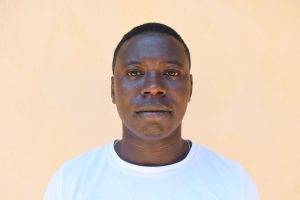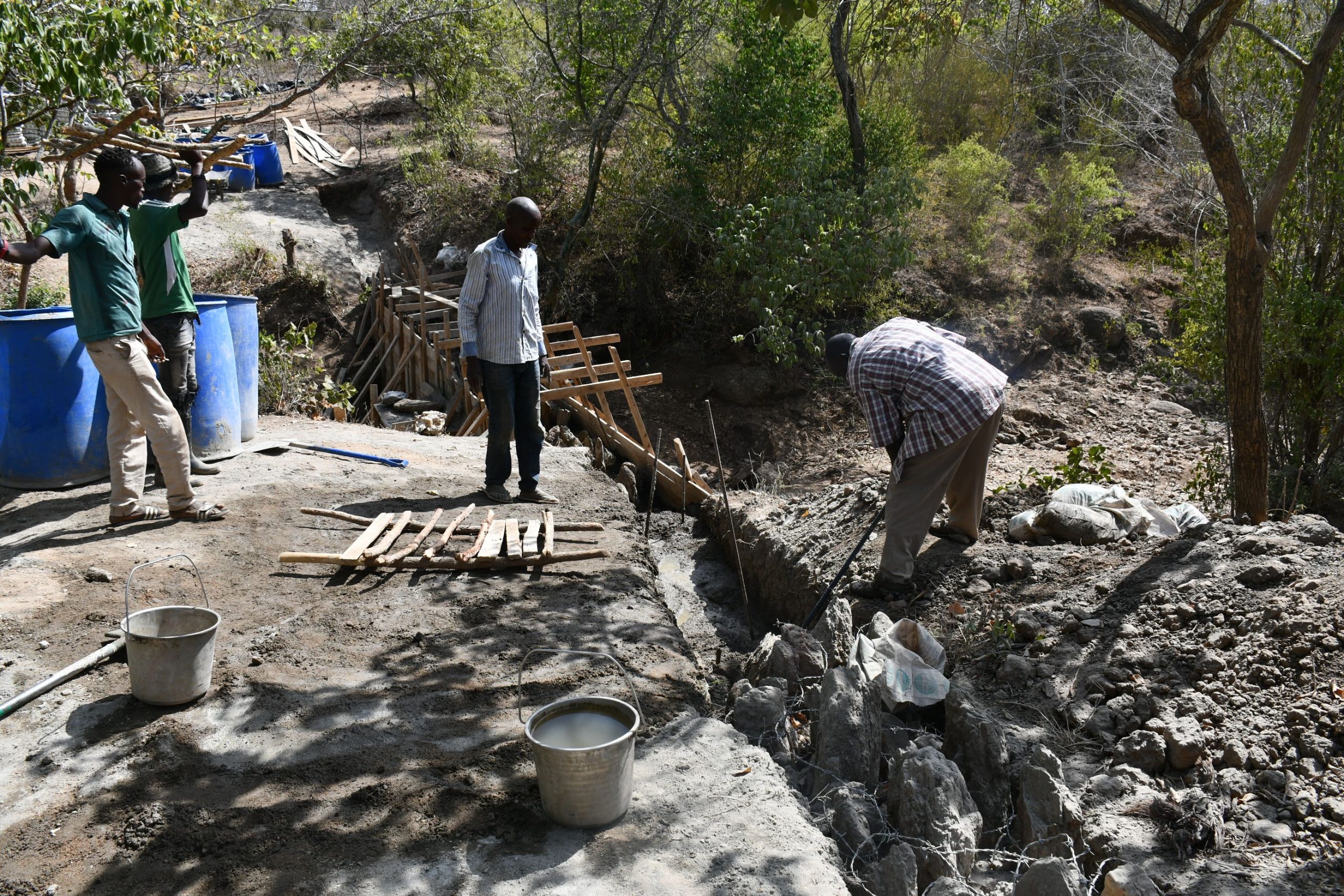The 500 community members of the Ithambwangao Community depend on a distant well for their daily water needs. Because the well is so far away, just getting there and back consumes people's time, leaving them little time and energy for other important things like farming, producing an income, or attending school.
This semi-arid area is vast, and the water crisis is acute because of the lack of rain. The surrounding communities have been building sand dams with attached shallow wells to address the issue, but now it is time for this community to have one of those systems so people do not have to trek so far in the hot sun every day.

Terresia on her long walk for water.
"Building more sand dams is a beacon of hope in the fight against the water crisis. More sand dams mean that more community members will be reached, and the water security scope will be enhanced. Also, it means that community members and children can have more time to work on their farms and study," shared Field Officer Jefferson Mutie.
As we all know, water is critical to survival; without it, people can not flourish.

Terresia.
Community member Terresia Nyerere, a 50-year-old farmer, shared her thoughts, "Water is life. It sustains us, nourishes our bodies, and fuels our dreams. It flows through our daily routines, from the first sip of morning coffee to the laughter shared during a family meal. Water is not just a resource; it's a vital connection to our environment and each other. It nurtures our communities, supports our health, and enables us to thrive. Without it, life as we know it would cease to exist. For me, water represents hope, resilience, and the promise of a better tomorrow."
It takes Terresia forty-five minutes one way to reach the well where she collects water for her family. Then she must wait her turn to fill her jug and start the trek home carrying her full container, which, on average, weighs forty-four pounds. For her to make one trip, collecting and carrying that relatively small amount of water back home takes her a minimum of an hour and a half. It is an exhausting task, especially when it must be repeated throughout the day to have enough water to survive.

Terresia at the faraway well.
Building a sand dam with an attached shallow well in Terresia's community will provide all of the water she needs in a day while still giving her time to do other important things to improve her daily life since she will be able to collect it quickly.
With easy water access, Terresia can fuel her dreams and build her life.
Solving the water crisis in this community will require a multifaceted system that will work together to create a sustainable water source that will serve this community for years to come.
Steps Toward a Solution
Our technical experts worked with the local community to identify the most effective solution to their water crisis. Together, they decided to construct a sand dam and dug well.
Sand Dam
Sand dams are sought-after, climate-smart, and lasting water solutions, providing hope and resilience to communities in arid Southeastern Kenya. Think of them like giant sandboxes constructed in seasonal rivers that would typically quickly dry up after the rainy season. Instead of holding water like traditional dams, they collect sand and silt.
When infrequent rains do come, these dams catch a percentage of the river's flow, letting most of the water continue downstream to other communities. But here's the magic: the sand they collect acts like a natural filter, holding onto water long after the river's gone dry. Then, wells are constructed nearby, creating a reliable water source even during the driest times.
And the benefits don't stop there! In communities impacted by climate change, sand dams replenish groundwater and prevent soil erosion. Even during severe droughts, the consistent water supply from these sand dams allows farmers to thrive, giving way for enough food not only for their families but also to sell in local markets.
The most remarkable aspect of sand dams is how they involve the local community every step of the way, giving them a sense of ownership and pride in solving their own water shortage and managing their own water resources.
This sand dam will be connected to a dug well to make the water more accessible.
Community Education & Ownership
Hygiene and sanitation training are integral to our water projects. Training is tailored to each community's specific needs and includes key topics such as proper water handling, improved hygiene practices, disease transmission prevention, and care of the new water point. Safe water and improved hygiene habits foster a healthier future for everyone in the community. Encouraged and supported by the guidance of our team, a water user committee representative of the community's diverse members assumes responsibility for maintaining the water point, often gathering fees to ensure its upkeep.

 Sand Dam
Sand Dam
 Rehabilitation Project
Rehabilitation Project



















